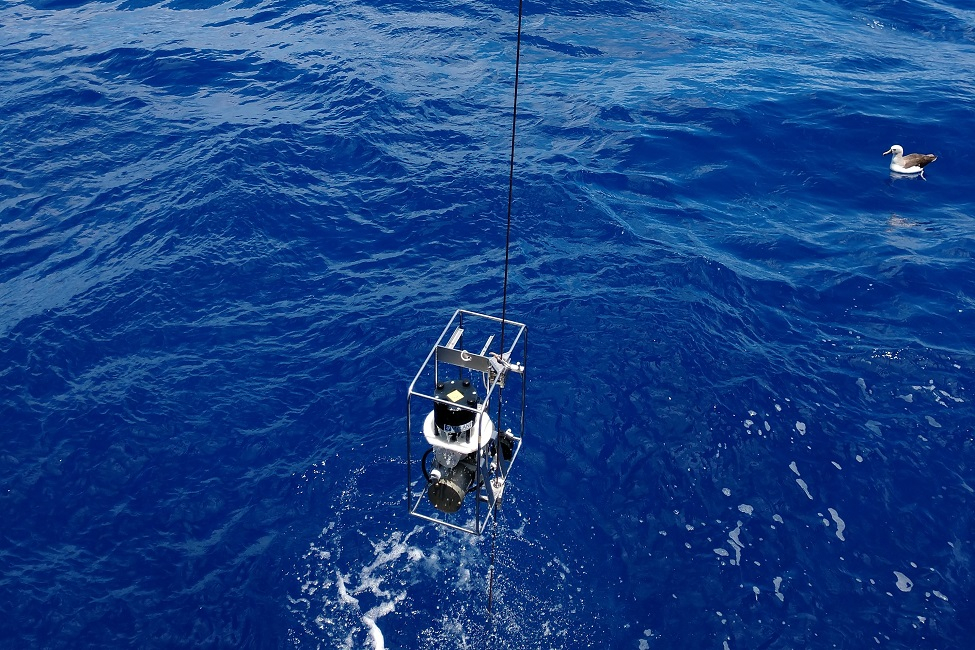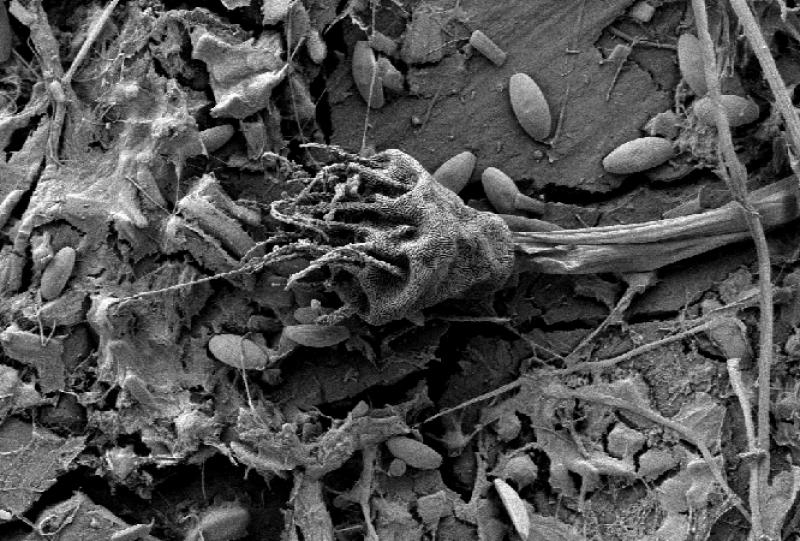‘Missing’ plastics uncovered deep in the ocean
Hundreds of studies have surveyed plastic debris on the surface or near surface of the ocean. However, these studies only “scratch the surface,” and do not provide a complete inventory of what’s lurking beneath. An international research team studied the prevalence of plastics in the entire water column of an offshore plastic accumulation zone in the southern Atlantic Ocean and implicates the ocean interior as a crucial pool of ‘missing’ plastics.
Plastic is everywhere in the ocean water
The team demonstrates that small microplastics are critical, underexplored and found from the surface to the deepest depths of the oceanic water column. In addition, findings suggest that weak ocean current systems contribute to the formation of small microplastics hotspots at depth, resulting in a higher encounter rate for subsurface particle feeders like zooplankton.
“We like to speak about the Plastisphere because any species in the water, small and large, interacts in some way with the plastic particles in the water. Microbes can colonize a particle because it’s surface gives them an advantage,” says Linda Amaral-Zettler of Royal Netherlands Institute for Sea Research. “It was an eye-opener to see that some floating microplastics are actually sinking down slowly because of biotic (Plastisphere) and abiotic (physical) interactions.”
This study highlights the urgency for more quantification of microplastics at depth, especially the smaller size fraction, to better understand ecosystem exposure and to predict the fate and impacts of these microplastics.
Multidisciplinary research
There isn’t much known about microplastics. To gain a better mechanistic understanding of how plastics sink from the ocean surface beyond the mixed layer and ultimately to abyssal depths of the ocean, the researchers sampled plastic particles in the South Atlantic Subtropical Gyre. The team used a specially outfitted in-situ high-volume filtration system, as well as Manta net and MultiNet sampling, combined with micro-Fourier-transform-infrared imaging to do so.

They found that abundances and distribution patterns of small microplastics varied geographically and vertically due to the diverse and complex redistribution processes interacting with different plastic particles. They also observed large horizontal and vertical variations in the abundances of small microplastics, displaying inverse vertical trends in some cases. Small microplastics abundances in pump samples were more than two orders of magnitude higher than large microplastics concurrently collected in MultiNet samples.
“Small microplastics are different from large microplastics with respect to their high abundance, chemical nature, transport behavior, weathering stages, interactions with ambient environments, bioavailability and the release efficiency of plastic additives,” says Shiye Zhao, Ph.D., first author,, Japan Agency for Marine-Earth Science and Technology . “These distinct characteristics impact their environmental fate and potential impacts on marine ecosystems.”
Lost and found
More than 65 percent of the total pump sample count in the study, were higher density polymers such as alkyd resins, used in most commercial oil-based coatings such as ship hull paints and also polyamide, commonly used in textiles like clothing and ropes. This finding highlights a discrepancy between polymer compositions from previous ocean surface-based surveys, which are typically dominated by buoyant polymers such as polyethylene used for packaging film and grocery bags and polypropylene used for plastic containers and reusable water bottles.
Compared with net-collected large microplastics, small microplastics particles are more highly oxidized and appear to have a longer lifetime in the water column, suggesting increased marine ecosystem health risks through possible bio-uptake of plastic particles and associated chemicals and potential impacts to global biogeochemical cycles.
Plastisphere interactions
The combined analysis procedure used by the research team provided a more integrative view of the distribution, abundance, dimensions and chemical nature of plastic particles in the ocean water.
“As plastic particles disintegrate into smaller size fractions, they can become harmful in different and unpredictable ways that are only now beginning to be understood,” says co-author Tracy Mincer, FAU Harbor Branch Oceanographic Institute and FAU Harriet L. Wilkes Honors College, USA. “These micron-size microplastics can move across the gut epithelium, become trapped in biomass, and have the potential to transfer through marine food webs, posing an unknown ecological risk and biogeochemical impacts.”
As commercial fishing efforts scale up to harvest marine species for human consumption, the researchers say that studies focusing on smaller microplastics ingestion are urgently needed to assess the extent of plastic contamination in biomass.
Publication
Large quantities of small microplastics permeate the surface ocean to abyssal depths in the South Atlantic Gyre
Shiye Zhao, Erik R. Zettler, Ryan P. Bos, Peigen Lin, Linda A. Amaral-Zettler, Tracy J. Mincer
This work was supported by start-up funds from the Royal Netherlands Institute for Sea Research to help fund the expedition.
